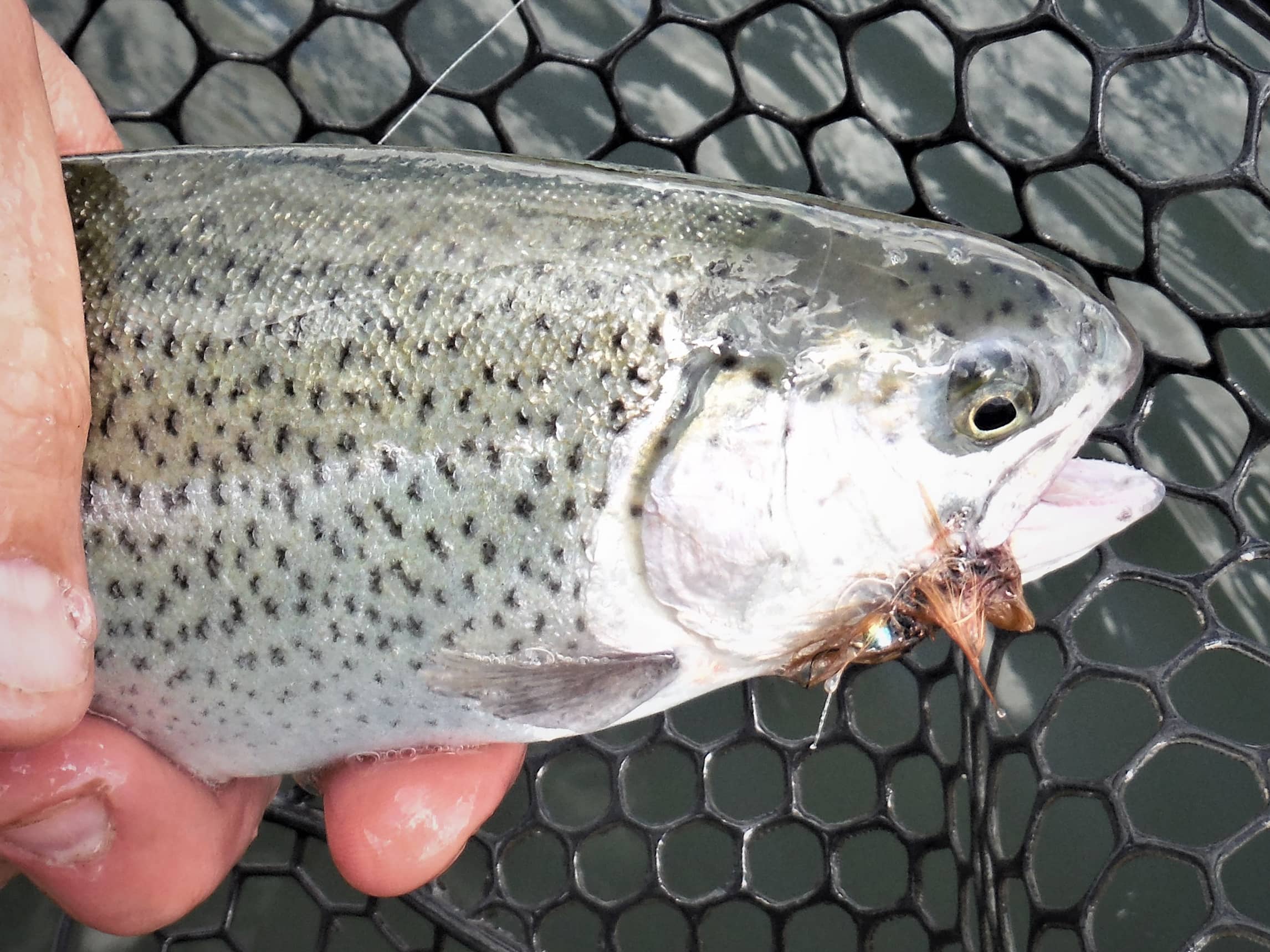
The addition of a bead head is just one of many tweaks you can make to a woolly bugger pattern that will increase it’s already excellent fish-catching abilities. Try a bunch of them out this winter, and be ready for fast fishing in the spring. Simonson Photo.
By Nick Simonson
By itself, the woolly bugger is one of the most effective flies for catching anything that swims. From trout, to panfish, to crappies, to bass, this classic streamer consisting of as little as three materials – chenille, saddle hackle, and marabou – catches them all, and does so in a way that all fly boxes require a row reserved specifically for them. Beyond the basics, a few simple additions provide flash, weight, and other fish-attracting elements that make the woolly bugger even more irresistible. As you start on this winter’s fly tying journey, or perhaps your first foray into crafting your own patterns altogether, keep these four woolly bugger additions in mind.
Bead Brain
The bead-head woolly bugger is a staple and the addition of this flash-generating, weight-adding highlight is as simple as sliding the bead over the hook point and up to the hook eye. While brass beads are the most common, tungsten beads add more weight. There are also a variety of bead sizes, styles and colors that can be customized to a particular woolly bugger pattern, or to what the fish in your waters like most. Add a bright orange bead to a bugger and it’s an egg-sucking leech, put a rainbow bead on one with a crystalline pattern and it’s a sure-fire crappie catcher. It’s an easy add to get the fly down in the water and add some flash.
Let’s Get Sili
The tying in of silicone legs, sometimes even multiple pairs depending on the length of the woolly bugger, gives some extra wiggle to an already enticing fly. Emulating a larger stonefly larva in the water, or the clicking legs of a crayfish, tying in a set of sili-legs provides realism that replicates popular edibles among larger trout, smallmouth bass, and crappies. The legs can be wrapped down with a tied-in wire segment or secured with thread wraps as chenille advances up the hook shank. Check to make sure they’re evenly spaced and on a nice horizontal plane with the rest of the fly as they get set into the pattern
Chenille Upgrades
A medium chenille works well for most any woolly bugger body. It’s a bit bulky, absorbs water so the fly sinks, and it provides a wide selection of color options for experimenting with on the water. There are times however where something with added flash, fibers, or function is necessary and upgrading a standard chenille to a crystal chenille, a sparkly estaz, or other variety of bugger body material is a good idea. When fishing crappies on the fly, having that extra sparkle helps better imitate a baitfish and triggers more strikes. Consider tinkering with various body materials on woolly buggers this winter to find out what flashier, bulkier, or wispier options work better on your waters next spring.
Tail Trade-Ins
Finally, adding to the marabou tail or replacing it can produce big strikes and find that magic attraction for fish on a given flow. Consider substituting grub-style rubber tails to make a woolly grubber variant. Tie in a pinch of krystal flash and cut it short to mimic a minnow’s tailfin on those flashier baitfish bugger patterns. Even a couple extra strands of krystal flash along the side of a standard marabou tail can give enough highlight to distinguish the recipe from other patterns in the water. Keep an open mind and add or alter tails on your woolly buggers as you see fit.
There are many other ways to modify this popular streamer beyond these four. Use your imagination, the information nature provides, and the vast fishing information warehouse that is the internet to seek out tweaks on the classic woolly bugger pattern and add them to your tying plans this season. Come springtime, you’ll have more than just a row to throw at whatever fish species you pursue on the fly rod.
